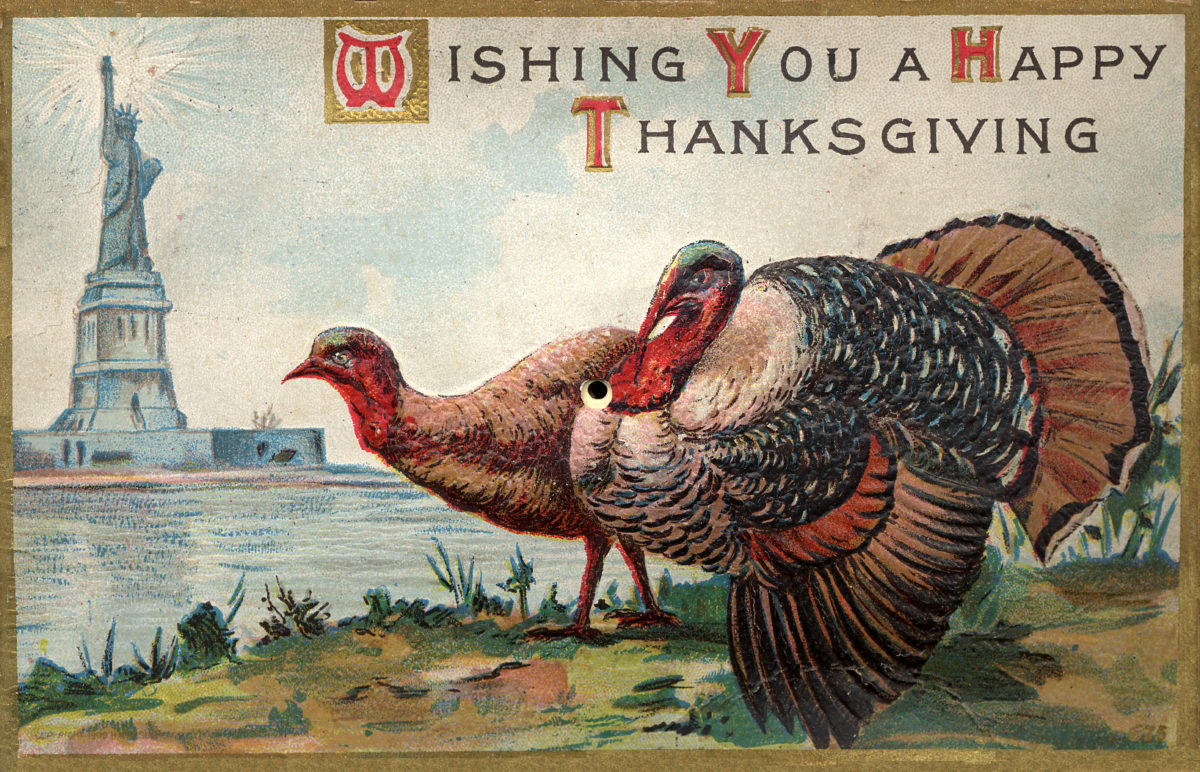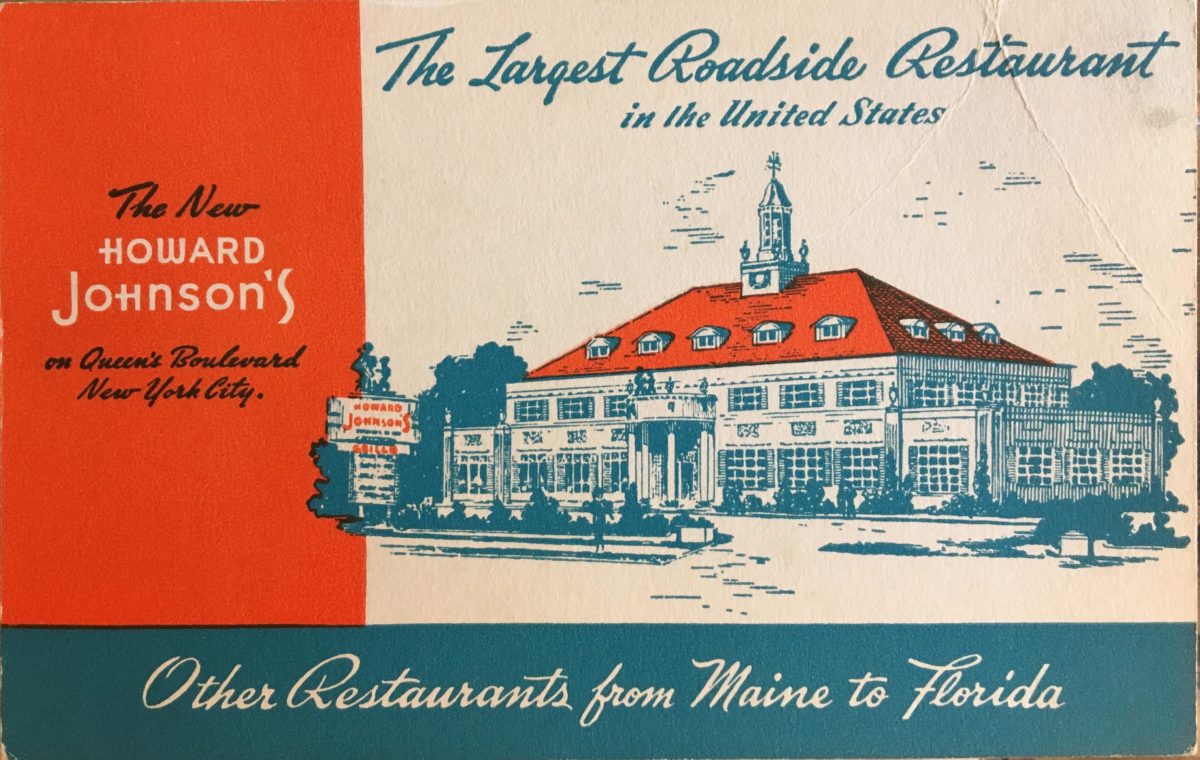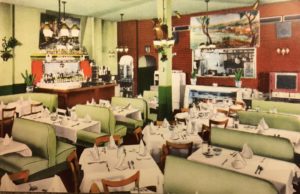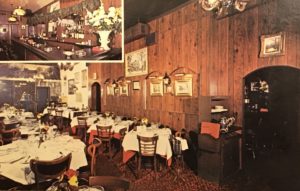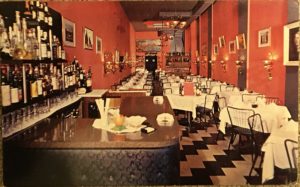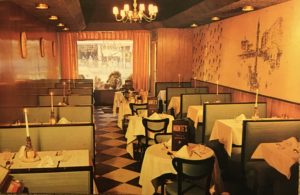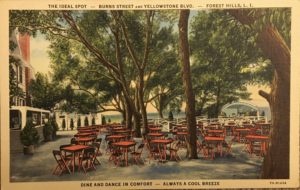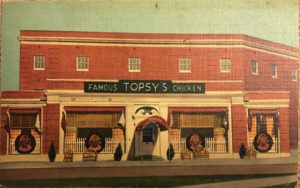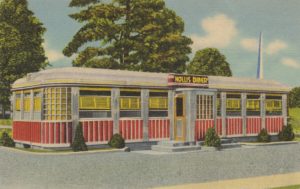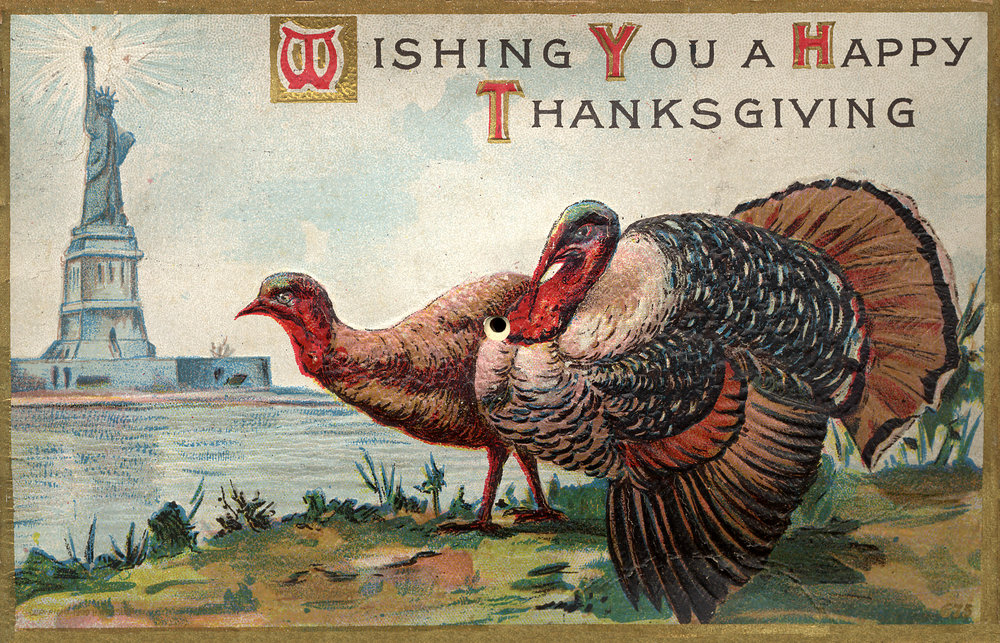Vintage postcards celebrate New Year’s traditions
By Michael Perlman
mperlman@queensledger.com
Several decades ago, postcards were a unique work of art, which could be found at your corner pharmacy, but today vintage ones are found on eBay and at estate sales and postcard shows. They represent nearly every theme, including hometowns, hobbies and even New Year’s.
In 1873, the first American “picture postcard” was designed.
Today, a significant number of postcards from the late 19th and early to mid-20th century exist in an excellent state with fine penmanship and a one-cent stamp for domestic mail and two cents for international mail.
Deltiology is the collection and study of postcards, which derives from “deltion,” a Greek term for a writing tablet or letter. A postcard collector is known as a deltiologist.
Most New Year’s postcards are colorful lithographs that seem realistic, and a majority were published between 1898 and 1918.
Those from the 1920s to the 1940s were published in fewer quantities.
Some postcards offered a New York City theme.
One celebrated urban innovations and buildings that were regarded as landmarks.
A postcard recognizing the approach of 1906 features photos of significant landmarks; the Times Building, the New York City subway, the Flatiron Building and the Soldiers’ and Sailors’ Monument within large block letters of the year, was adorned with holly.
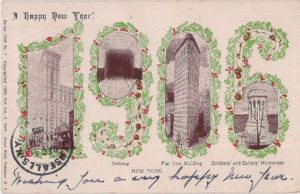
It was published by Franz Huld of 246 Fifth Avenue as part of Series 1906, No. 1.
He is regarded as a significant American publisher who experimented with views, commemorations, comics and novelties.
Earlier on, the postcard trade was largely based in Germany and Holland.
It is all eyes on Times Square in a selection of postcards. A white border postcard features a black and white printed image of shoulder to shoulder attendees.
It is captioned, “They definitely met at the Astor on New Year’s Eve.”
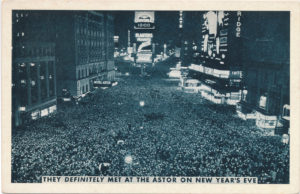
It was photographed from a once ornate Times Building and faces the Studebaker Building.
A Chevrolet illuminated sign reads 12:00. To its left is the legendary Beaux Arts style Hotel Astor, which was in operation from 1904 to 1967.
Times Square became the scene of New Year’s Eve celebrations in 1904, and the first ball drop dates to 1907, which was erected by New York Times publisher Adolph Ochs.
Other festive events were captured on hand-colored lithographs, including the Tournament of Roses on New Year’s Day in Pasadena, California.
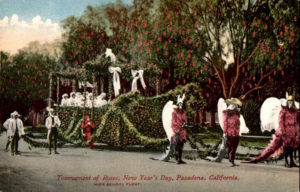
It features an exquisitely decorated high school float with roses on trees, floats and vines that unite the unique costumed marchers.
Poetry and inspirational quotes can be found on early 20th century postcards.
A circa 1910 postcard features an illustration of an elegantly dressed woman holding flowers and sitting on a ladder, with flowers growing around the ladder.
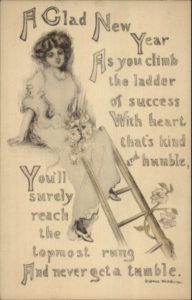
It is titled “A Glad New Year” and reads in a creative font, “As you climb the ladder of success, With heart that’s kind and humble, You’ll surely reach the topmost rung, And never get a tumble.”
It becomes a musical production on an Auld Lang Syne postcard, which bids farewell to the old year and is interpreted as a call to remember long-standing friendships.
It features the complete lyrics on a banner with a watercolor background, and two men on top wearing suits with a top hat and a traditional hat, shaking hands.
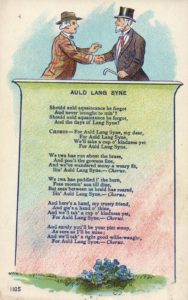
Another New Year Greetings circa 1912 postcard reads: “We’ll take the Grand Tour round the sun, Nor mind the wind and wet, And may we say when it is done, ‘The happiest journey yet.’”
The poem is complemented by a child in a raincoat and a rain hat on a boat with a backdrop of an early skyline with blues and golds.
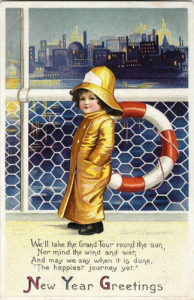
This signed postcard was the result of a significant American illustrator, Ellen Hattie Clapsaddle (1865 – 1934), whose style has drawn much admiration, making her a most prolific postcard and greeting card artist of her time.
Other postcards offer a romantic theme. Among a most elegant hand-colored lithograph depicts a couple dressed in an evening gown and suit and toasting in front of a picturesque scene of water, trees and a mountain while embracing on a landing in front of a mansion with a balustrade.
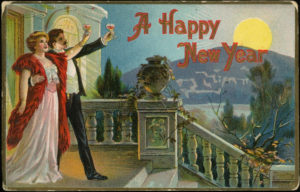
It is trimmed in gold leaf.
Another chromolithograph postcard from circa 1910 focuses on a Colonial era couple dancing at a ball, kicking their feet, with Impressionist musicians playing the violin and outlines of couples dancing in the background.
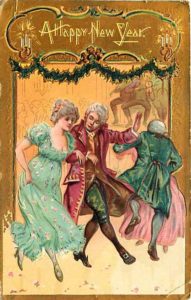
A gold frame with graceful ornamentation can be found within, where candlelight sconces are tied to the detail.
This embossed postcard was published by E. Nash Co. under the New Year Postcards Series, and was also a well-known illustrator of high-quality holiday cards and based in Manhattan.
A most famous publisher was Raphael Tuck & Sons, and the firm was considered “Art publishers to their majesties the king and queen.”
Postcards by this firm are most desirable and operated from 1866 to the 1960s in London and at 122 Fifth Avenue in Manhattan.
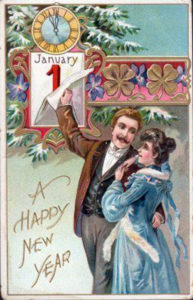
One postcard depicts an elegant couple ringing in the new year by looking into each other’s eyes as the man is pulling off a page of a calendar to reveal Jan. 1 under an elaborate Victorian style band with golden four-leaf clovers and under a Roman numeral clock.
Clocks that struck midnight were a popular theme, as in the case of an embossed gold, pink and blues accentuated 1907 postcard designed in the Art Nouveau style.
Some outstanding features were torches with ribbons, leaves and floral motifs.
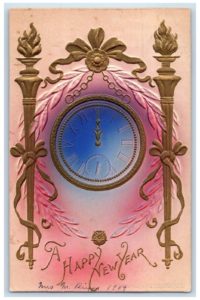
A bottom inscription reads, “P. Sanders, New York,” which references the publisher. Illustrated holiday postcards were his specialty.
The advent of the automobile is celebrated in colorful postcards that were futuristic yet graceful.
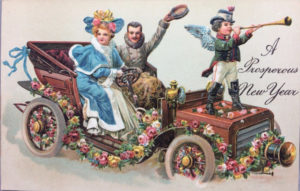
A young couple, facing the camera, rides in a two-seater in “A Prosperous New Year” circa 1910 postcard.
The woman wears a traditional coat with a floral hat, beside a man in a well-appointed coat tipping his hat. The same couple was depicted in at least one variation of this postcard.
A deltiologist takes note of personalized features, including a ribbon and varied rose vines outlining the curves of the car. A young boy with angelic wings blows a triumphant horn in unison.
Prior to the postcard trade arriving in America, production was underway in Europe.
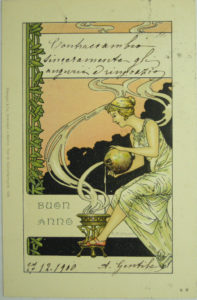
A “Buon Anno” circa 1900 Art Nouveau illustration features a woman pouring water from an urn to extinguish a fire, symbolizing renewal.
It bears the name of author R.M. Orlow. An inscription from publisher Stengel & Co (1885 – 1945) reads “Dresden u. Berlin.”
Real photo postcards, with color-tinted highlights of an image, were often dominated by a sepia tone finish.
It was rare to find the same couple or a group of children featured on other postcards of its kind.
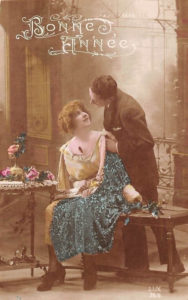
These postcards usually offer an ornate ambiance and one-of-a-kind calligraphy, such as in a Bonne Année card, where a man looks into a woman’s eyes, ready for that New Year’s kiss.
The viewer can encounter timeless romance, and have a taste of Victorian era fashions and furnishings. Unlike completely illustrated postcards, these cards feature images of real people, often in a studio depicting a European setting.
Family bonds were represented on real photo postcards, and some featured calendars alongside portraits that reinforced those bonds year-round.
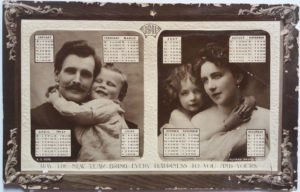
A baby boy hugs his father in one frame, whereas a baby girl hugs her mother in another.
A greeting, “May the New Year bring every happiness to you and yours,” can be seen daily while checking its 1911 calendar.
Gilded Age accented corners add to its distinction. This divided back postcard was part of the Rotary “Real Photographic” Opalette Series and was printed in England.
The Rotary Photographic Co. was associated with at least 1,422 portraits, was active between 1897 and 1916 and was a foremost real photo postcard publisher.
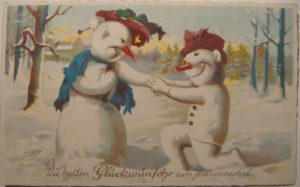
A hybrid of a romance and humor postcard can be found as a snowman takes on male and female form and engages in a proposal.
At midnight, a couple placed themselves in their shoes in a light-hearted interpretation in this circa 1920s or 1930s W.H.B. watercolor, which reads “Die besten wünsche zum jahreswechsel” or “Best wishes for the turn of the year” in German.




